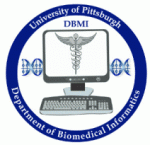TOP 10 PAPERS READING LIST, 2016 - 2017
![]()
As selected at RECOMB/ISCB Regulatory systems Genomics 2017
(Papers are listed alphabetically by title. Due to a draw, this year's list contains 11 papers.)
A prior-based integrative framework for functional transcriptional regulatory network inference, Siahpirani A, Roy S. Nucleic Acids Res 45(4):e21
chromVAR: inferring transcription-factor-associated accessibility from single-cell epigenomic data, Schep AN, Wu B, Buenrostro JD, Greenleaf WJ. Nat Methods 14(10):975-978
Denoising genome-wide histone ChIP-seq with convolutional neural networks, Koh PW, Pierson E, Kundaje A. Bioinformatics 33(14):i225-i233
Genome-scale high-resolution mapping of activating and repressive nucleotides in regulatory regions, Ernst J, Melnikov A, Zhang X, Wang L, Rogov P, Mikkelsen T, Kellis M. Nat Biotechnol 34(11):1180-1190
Genome-Wide Association between Transcription Factor Expression and Chromatin Accessibility Reveals Regulators of Chromatin Accessibility, Lamparter D, Marbach D, Rueedi R, Bergmann S, Kutalik Z. PLoS Comput Biol 13(1):e1005311
Identification of novel prostate cancer drivers using RegNetDriver: a framework for integration of genetic and epigenetic alterations with tissue-specific regulatory network, Dhingra P, Martinez-Fundichely A, Berger A, Huang FW, Forbes AN, Liu EM, Liu D, Sboner A, Tamayo P, Rickman DS, Rubin MA, Khurana E. Genome Biol 18:141
Is a super-enhancer greater than the sum of its parts?, Dukler N, Gulko B, Huang YF, Siepel A. Nat Genet 49:2-3
Quantifying the impact of non-coding variants on transcription factor-DNA binding, Zhao J, Li D, Seo J, Allen AS, Gordan R. Res Comput Mol Biol 10229:336-352
Reconstruction of enhancer-target networks in 935 samples of human primary cells, tissues and cell lines, Cao Q, Anyansi C, Hu X, Xu L, Xiong L, Tang W, Mok MTS, Cheng C, Fan X, Gerstein M, Cheng ASL, Yip KY. Nat Genet 49(10):1428-1436
SMiLE-seq identifies binding motifs of single and dimeric transcription factors, Isakova A, Groux R, Imbeault M, Rainer P, Alpern D, Dainese R, Ambrosini G, Trono D, Bucher P, Deplancke B. Nat Methods 14(3):316-322
Transcription factor family-specific DNA shape readout revealed by quantitative specificity models, Yang L, Orenstein Y, Jolma A, Yin Y, Taipale J, Shamir R, Rohs R. Mol Syst Biol 13(2):910
CONGRATULATIONS TO ALL AUTHORS!
DREAM POSTERS
DREAM Poster Session - Tuesday, 6:00 pm - 7:00 pm
Location: Lobby and 105
Presenters:
If you are in DREAM Session, you may set up your poster any time between 8:30 am and Noon on Tuesday and must remove your poster by 8pm on Tuesday. All remaining posters will be discarded.
Poster Display Size: - When preparing accepted posters please note that your poster should not exceed the following dimensions: 36 inches wide by 48 inches high. There will be 2 posters per side on the each poster board.
As of October 31, 2017. Subject to change without notice.
| Authors | Title | Board # |
| Geoffrey Siwo, Katrina Button-Simons, Amel Ghoulia, Jean-Baka Domolevo, Sumir Panji, Sage Davis, Faisal Fadlelmola, Nicola Mulder and Michael Ferdig | DREAM of Malaria: an open ecosystem to predict drug sensitivity in malaria parasites | 1 |
| Lewis Tomalin and Maria Suprun | Estimating a generalizable ‘final model’, suitable for clinical classification applications, using Monte Carlo resamples of patient data | 3 |
| Patrick Schwab, Mohammad Amin Khashkhashi Moghaddam and Walter Karlen | Automated Extraction of Digital Biomarkers for Parkinson's Disease using A Hierarchy of Convolutional Recurrent Attentive Neural Networks | 5 |
| Marlena Duda and Yuanfang Guan | Deep Learning for Parkinson’s Disease Digital Biomarker Detection | 7 |
| Xinyu Zhang, Ying Hu and Ke Xu | Feature extraction and selection from time-series digital data to identify biomarkers | 9 |
| Mi Yang, Zhi Li, Francesca Petralia, Weiping Ma, Thomas Yu, Pei Wang, Nathan Edwards, Samuel Payne, Henry Rodriguez, Paul Boutros, Gustavo Stolovitzky, David Fenyo and Julio Saez-Rodriguez | NCI-CPTAC DREAM Proteogenomics sub challenge 2 | 11 |
| Imane Nedjar, Saïd Mahmoudi and Mohammed Amine Chikh | Topological methods for mammographic images classification: The Digital Mammography DREAM Challenge 2017 | 13 |
| Avinash Bukkittu, Baihan Lin, Trung Vu and Itsik Pe'Er | Parkinson's Disease Digital Biomarker Discovery with Optimized Transitions and Inferred Markov Emissions | 15 |
| Francesca Petralia, Mi Yang, Zhi Li, Thomas Yu, Weiping Ma, Pei Wang, Nathan Edwards, Samuel Payne, Henry Rodriguez, Paul Boutros, Gustavo Stolovitzky, David Fenyo and Julio Saez-Rodriguez | Prediction of Phosphorylation Abundance based on Global Proteomics Abundance and Genomics Data | 17 |
| Weiping Ma, Zhi Li, Francesca Petralia, Mi Yang, Thomas Yu, Nathan Edwards, Samuel Payne, Henry Rodriguez, Paul Boutros, Gustavo Stolovitzky, David Fenyo, Julio Saez-Rodriguez and Pei Wang | CPTAC Dream Challenge - Sub challenge 1: Imputation of global proteomics data from labeled mass spectrometry experiment | 19 |
| Ana Stanescu, Mehmet Eren Ahsen, Robert Vogel, Gustavo Stolovitzky, Solveig K. Sieberts and Gaurav Pandey | Crowdsourced ensembles for the DREAM Respiratory Viral (RV) Challenge | 21 |
| Yiyi Li, Sajal Kumar, Hua Zhong, Hien Nguyen and Joe Song | Predicting missing protein values in DREAM 2017 CPTAC Subchallenge 1 | 23 |
| Arunima Srivastava, Daniel Garijo, Varun Ratnakar, Rajiv Mayani, Ravali Adusumilli, Hunter Boyce, Raghu Machiraju, Yolanda Gil and Parag Mallick | Sharing workflow environments with WINGS for reusability, reproducibility and benchmarking | 25 |
RSG POSTERS
Poster Session A - Sunday, 5:30 pm - 7:00 pm
Location: Lobby and 105
Poster Session B - Monday, 5:30 pm - 7:00 pm
Location: Lobby and 105
Presenters:
If you are in Session A, you may set up your poster any time between 8:30 am and Noon on Sunday and must remove your poster by 8pm on Sunday. All remaining posters will be discarded.
If you are in Session B, you may set up your poster any time between 8:30 am and Noon on Monday and must remove your poster by 8pm on Monday. All remaining posters will be discarded.
Poster Display Size: - When preparing accepted posters please note that your poster should not exceed the following dimensions: 36 inches wide by 48 inches high. There will be 2 posters per side on the each poster board.
As of November 8, 2017. Subject to change without notice.
| Authors | Title | Board # | Session |
| Richard Chen | Changes in differential expression of genes in normal and metabolically suppressed mice in response to radiation | 1 | A |
| Abdollah Dehzangi, Yosvany López, Sunil Pranit Lal, Ghazaleh Taherzadeh, Abdul Sattar, Tatsuhiko Tsunoda and Alok Sharma | Improving succinylation prediction accuracy by using secondary structure and evolutionary information | 2 | B |
| Kaoru Ohashi, Masashi Fujii, Shinsuke Uda, Hiroyuki Kubota, Hisako Komada, Kazuhiko Sakaguchi, Wataru Ogawa and Shinya Kuroda | Mathematical model analysis for plasma glucose homeostasis regulated by plasma hormones and metabolites in humans | 3 | A |
| Tobias Zehnder, Philipp Benner and Martin Vingron | Enhancer prediction with Hidden Markov Models | 4 | B |
| Oluwafemi Oyamakin and Olalekan Durojaiye | Length and Area Biased distributions on Forest Data using Exponentiated Weibull Distribution | 5 | A |
| Yayoi Natsume-Kitatani, Ken-Ichi Aisaki, Satoshi Kitajima, Samik Ghosh, Hiroaki Kitano, Kenji Mizuguchi and Jun Kanno | Assessment of the effect of valproic acid on organ-specific reactions in mice by analyzing quantitative Percellome toxicogenomics data | 6 | B |
| Merve Cakir, Sayan Mukherjee and Kris Wood | Defining Signaling Networks of Frequently Altered Genes via Label Propagation | 7 | A |
| Emily Johnson, Madeline Frederick, Noel-Marie Plonski, Gail Fraizer and Helen Piontkivska | A novel RNA-Seq analysis pipeline tutorial shows upregulation of ADAR in zika infection and differential VEGFA isoform expression in AML. | 8 | B |
| Alyssa Morrow, Dharmeshkumar Patel, James Kaminski, Bruce Blazar, Nick Haining and Nir Yosef | Maintaining the epigenetic landscape of T stem memory cells from reprogrammed inducible pluripotent stem cells | 9 | A |
| Andre Forbes, Priyanka Dhingra and Ekta Khurana | “Novel computational approach to identify breast cancer drivers using regulatory network rewiring” | 10 | B |
| Duc Do and Serdar Bozdag | Identification of functional MiRNA-Transcription factor-Target gene modules in cancer | 11 | A |
| Yuichi Aoki, Takeshi Obayashi and Kengo Kinoshita | Identification of genomic features in the evolutionary age-specific coexpressed gene modules | 12 | B |
| Jake Lin, Ondrej Cinek, Matti Nykter, Heikki Hyöty, Lenka Kramna, Sami Oikarinen, Riitta Veijola, Jorma Toppari and Mikael Knip | Analysis of the crAssphage sequence in stool samples from children with type 1 diabetes | 13 | A |
| Alexander Martinez-Fundichely and Ekta Khurana | Identifying cancer coding and non-coding drivers involved in somatic structural variations | 14 | B |
| Tomi Häkkinen, Joonas Tuominen, Matti Annala, Kati Kivinummi, Teuvo Tammela, Leena Latonen, Kirsi Granberg, Tapio Visakorpi and Matti Nykter | Chromatin alterations in human prostate cancer | 15 | A |
| Mu Yang, Yi-An Tung, Dung-Chi Wu, Yen-Jen Oyang and Chien-Yu Chen | Incorporating Enhancer-Promoter Interactions in Discovering Regulatory Single Nucleotide Polymorphisms | 16 | B |
| Anastasia Shcherban, Matti Nykter and Juha Kesseli | Integration of multiple track feature detection allows improved sensitivity in identification of transcription factor binding | 18 | B |
| Ameya Kulkarni, Erika Brutsaert, Jessica Mar, Meredith Hawkins, Nir Barzilai and Jill Crandall | Metformin modulates metabolic and non-metabolic pathways in skeletal muscle and subcutaneous adipose tissues of older adults | 19 | A |
| Tomas Rube, Chaitanya Rastogi, Judith Kribelbauer and Harmen Bussemaker | A unified approach for quantifying and interpreting DNA shape readout by transcription factors | 20 | B |
| Xiaojia Tang, Suresh Swaminathan, Karunya K. Kandimalla and Krishna Kalari | Integrative network analysis of insulin time-series response at the blood-brain barrier | 21 | A |
| Felix Yu, Dustin Shigaki and Michael A. Beer | Gkm-SVM Feature Extraction and Summarization | 22 | B |
| Eric Minwei Liu, Alex Martinez Fundichely, Tawny Cuykendall, Jason G. Dumelie, Matthew MacKay, Priyanka Dhingra, Samie R. Jaffrey and Ekta Khurana | Identifying non-coding cancer drivers in CTCF insulators based on recurrence and functional impact analysis | 23 | A |
| Michael Mudgett and Michael A. Beer | Gkm-SVR: Using Support Vector Regression to Train on Continuous Functional Data | 24 | B |
| Anders Wallqvist, Ruifeng Liu and Mohamed Abdulhameed | Molecular Structure-Based Large-Scale Prediction of Chemical-Induced Gene Expression Changes | 26 | B |
| Francesco Vallania, Andrew Tam, Shane Lofgren, Steven Schaffert, Tej Azad, Erika Bongen, Meia Alsup, Michael Alonso, Mark Davis, Ed Engleman and Purvesh Khatri | Leveraging heterogeneity in public data to reduce bias and increase accuracy of cell-mixture deconvolution | 27 | A |
| Gilles Monneret, Pascal Fieth, Alexander Hartmann, Andrea Rau, Florence Jaffrézic and Gregory Nuel | Inferring causal structure in regulatory networks from a mixture of observational and intervention experiments — Laplace approximation, MCMC, and parallel tempering | 28 | B |
| Mariana Martinez Sanchez, Marcia Hiriart and Elena Alvarez-Buylla | The CD4+ T cell regulatory network mediates inflammatory responses during acute hyperinsulinemia: a simulation study | 29 | A |
| Andrew Gentles, Angela Hui, Weiguo Feng, Ramesh Nair, Alice Yu, Majid Shafiq, Erna Forgo, Amanda Khuong, Yue Xu, Chuong Hoang, Matt van de Rijn, Maximilian Diehn and Sylvia Plevritis | Clincally relevant interactions in the NSCLC tumour microenvironment | 30 | B |
| Rahul Metri and Nagasuma Chandra | DMIN : An algorithm for driver mutation identification using influence network and its application in melanoma | 31 | A |
| David Chen, Hollis Wright and Alejandro Lomniczi | Comparative Analysis of ChIP-Seq Peak Calling Methods | 32 | B |
| Liron Yoffe, Avital Gilam, Orly Yaron, Avital Polsky, Luba Farberov, Argyro Syngelaki, Kypros Nicolaides, Moshe Hod and Noam Shomron | Early Detection of Preeclampsia Using Circulating Small non-coding RNA | 33 | A |
| Krishna Praneeth Kilambi, Qifang Xu, Guruharsha Kuthethur Gururaj, Kejie Li, Spyros Artavanis-Tsakonas, Andreas Lehmann and Roland Dunbrack Jr. | Protein domain-based structural interfaces help identify biologically-relevant high-confidence interactions in the human interaction network. | 34 | B |
| Hansaim Lim and Lei Xie | Target gene prediction of transcription factor using a new neighborhood-regularized tri-factorization one-class collaborative filtering algorithm | 35 | A |
| Verena Heinrich, Anna Ramisch and Martin Vingron | Differential analysis of regulation based on epigenetic enhancer prediction | 36 | B |
| Vikrant Palande, Milana frenkel-Morgenstern and Dorith Raviv Shay | Diagnosis of glioma tumors using circulating cell-free DNA | 37 | A |
| Peter Koo, Praveen Anand and Sean Eddy | Improved Predictions of Sequence Specificities of RNA-Binding Proteins by Deep Learning | 38 | B |
| Anat Kreimer, Zhongxia Yan, Nadav Ahituv and Nir Yosef | Meta-analysis of massive parallel reporter assay enables functional regulatory elements prediction | 39 | A |
| Irene Kaplow, Frank Schmitges, Peyton Greenside, Lixia Jiang, Ernest Radovani, Guoqing Zhong, J. Seth Strattan, Daniel Kim, Avanti Shrikumar, Jessika Adrian, Esther Chan, Tejaswini Mishra, Chuan Sheng Foo, Hamed Najafabadi, Hunter Fraser, Jack Greenblatt, Michael Snyder, Timothy Hughes and Anshul Kundaje | An Expanded Understanding of C2H2 Zinc Finger Transcription Factor Binding Preferences | 40 | B |
| Hadas Zur, Rachel Cohen-Kupiec and Tamir Tuller | Tracking and Engineering the Evolution of Organismal Fitness via Multi-Organism mRNA Translation Whole Cell Simulations | 41 | A |
| Yufan Zhou, Diana Gerrard, Junbai Wang, Mahitha Rajendran, Rachel Schiff, Shili Lin, Seth Frietze and Victor Jin | Temporal dynamic reorganization of 3D chromatin architecture in hormone-induced breast cancer and endocrine resistance | 42 | B |
| Davide Chicco, Haixin Sarah Bi, Juri Reimand and Michael M. Hoffman | BEHST: genomic set enrichment analysis enhanced through integration of chromatin long-range interactions | 43 | A |
| Shuonan Chen and Jessica Mar | Developing Bayesian modeling methods to characterize gene regulatory relationships in single cells | 44 | B |
| Suvi Luoto, Juha Kesseli, Matti Nykter and Kirsi Granberg | Computational characterization of suppressive immune microenvironment in glioblastoma | 45 | A |
| Rosanna Smith, Patrick Stumpf, Sonya Ridden, Aaron Sim, Sarah Filippi, Heather Harrington and Ben MacArthur | Nanog Fluctuations in Embryonic Stem Cells Highlight the Problem of Measurement in Cell Biology | 46 | B |
| Elaheh Moradi and Matti Nykter | Supervised pathway level analyses for classification of Alzheimer’s disease | 47 | A |
| She Zhang and Ivet Bahar | Cell-Cell Heterogeneities at the 3D Genome Scale Investigated by the Gaussian Network Model | 48 | B |
| Nan Papili Gao, Thomas Hartmann and Rudiyanto Gunawan | Clustering and lineage inference in single cell transcriptional analysis of cell differentiation | 49 | A |
| Kiley Graim, Chandra Theesfeld, Olga Troyanskaya, Karin Sorenmo and Dima Gorenshteyn | The Genomic Landscape of Canine Mammary Tumors and its Potential as a Translational Model of Human Breast Cancer | 50 | B |
| Lingfei Wang and Tom Michoel | Wisdom of the crowd from dimension reduction outperforms supervised learning | 52 | B |
| Tianbao Li, Qi Liu, Nick Garza and Victor Jin | Integrative analysis reveals a functional and regulatory role of H3K79me2 in mediating alternative splicing in blood cancer cells | 53 | A |
| Takeshi Obayashi, Yuichi Aoki and Kengo Kinoshita | Logit-transformation of the coexpression MR index enables comparative coexpression analyses. | 54 | B |
| Noel-Marie Plonski, Madeline Fredrick, Emily Johnson, Gail Fraizer and Helen Piontkivska | Virtualbox-based RNA-Seq differential expression pipeline using open source tools: from fastq files to presentable results. | 55 | A |
| Hatice Osmanbeyoglu, Petar Jelinic, Douglas Levine and Christina Leslie | Inferring transcriptional regulatory programs in gynecological cancers | 56 | B |
| Narmada Sambaturu and Nagasuma Chandra | Cutting through the complexity of genomic data: A general method to identify candidate genes | 57 | A |
| Luis Santos, Robert Vogel, Jerry Chipuk, Marc Birtwistle, Pablo Meyer and Gustavo Stolovitzky | Cell to cell variability in mitochondrial abundance enables fractional control of apoptosis | 58 | B |
| Evan Paull, Federico Giorgi, Mariano Alvarez and Andrea Califano | Pan-cancer analysis reveals functional interactions between genomic and transcriptional drivers of disease | 59 | A |
| Luca Ponzoni and Ivet Bahar | Structural dynamics is a determinant of the functional significance of missense variants | 60 | B |
| Brian Ross, Fabio Anaclerio and James Costello | Measuring chromosome conformation by fluorescence microscopy | 61 | A |
| Allison Richards, Amanda Muehlbauer, Adnan Alazizi, Camilla Cascardo, Roger Pique-Regi, Ran Blekhman and Francesca Luca | Changes in microbiota composition modify host gene expression | 62 | B |
| Ushma Majmudar and Jessica Mar | Investigating machine learning methods for proteogenomics prediction in cancer biology | 63 | A |
| Jakub Mieczkowski, Brejnev Muhire and Michael Tolstorukov | Regulating the regulators: analysis of the differential expression of histone variant genes in normal development and during carcinogenesis | 65 | A |
| Ariel Afek and Raluca Gordan | Widespread increase in transcription factor-DNA binding due to mismatch damage | 66 | B |
| Slim Fourati and Aarthi Talla | Pathway-level approach to predict symptoms caused by respiratory viral infection | 67 | A |
| Yaron Orenstein, Huy Quoc Nguyen and Polly Fordyce | Reverse de Bruijn sequence to minimize cost and space of peptide arrays | 68 | B |
| Yi-An Tung, June-Tai Wu and Chien-Yu Chen | Integrating multiple cell types to enhance accuracy of predicting cross-cell type enhancer activities by deep learning | 69 | A |
| Vakul Mohanty, Ge Zhang and Kakajan Komurov | Comprehensive analysis of the variability of host organ function in cancer pathogenesis | 70 | B |
| Johnny Israeli, Raunaq Rewari, Irene Kaplow, Robin Fropf, Melanie Weilert, Julia Zeitlinger and Anshul Kundaje | Learning nucleotide-resolution in vivo transcription factor binding footprints and predictive sequence grammars from ChIP-seq and ChIP-nexus data | 71 | A |
| Sridhar Hariharaputran | Construction, visualization and analysis of protein interaction network for Mycobacterium species | 72 | B |
| Daniel Pique, John Greally and Jessica Mar | Identification and Characterization of Novel Oncogene Candidates in Invasive Breast Carcinoma | 73 | A |
| Albert Pla Planas, Xiangfu Zhong, Fatima Heinicke and Simon Rayner | A Deep Learning Approach for miRNA Target Prediction: Exploring the Importance of Pairing Beyond Seed Region | 74 | B |
| Rajiv Movva, Peyton Greenside, Avanti Shrikumar and Anshul Kundaje | Inferring nucleotide-resolution regulatory sequence grammars and non-coding regulatory variants from massively parallel reporter assays | 75 | A |
| Avanti Shrikumar, Peyton Greenside, Johnny Israeli and Anshul Kundaje | Not Just a Black Box: Interpretable Deep Learning for Genomics | 76 | B |
| Judith F Kribelbauer, Namiko Abe, Chaitanya Rastogi, Tomas Rube, Richard S Mann and Harmen J Bussemaker | Disentangling DNA Sequence and Shape Read-Out for a Multi-Protein Hox Complex in vitro and in vivo | 77 | A |
| Aarthi Talla, Joshua Burkhart, Mehrad Mahmoudian, Zafer Aydın and Slim Fourati | Systemic inflammation is the most robust predictor of symptoms following respiratory viral infection | 78 | B |
| Naomi Yamada, Nina Farrell, William K.M. Lai, B. Franklin Pugh and Shaun Mahony | Characterizing protein-DNA binding event subtypes in ChIP-exo data | 79 | A |
| Yuri Pritykin, Yuheng Lu, Steve Lianoglou, Aly Khan, Eric Bo Zheng and Christina Leslie | CLIPanalyze: an algorithm to detect and analyze peaks in CLIP-seq data | 80 | B |
| Robert J. Prill, Robert Vogel, Guillermo Cecchi, Grégoire Altan-Bonnet and Gustavo Stolovitzky | Noise-driven causal inference in biomolecular networks | 81 | A |
| Manu Setty, Vaidotas Kiseliovas, Linas Mazutis and Dana Pe'Er | Palantir characterizes cellular differentiation potential in human hematopoiesis | 82 | B |
| Boxiang Liu, Salil Bhate, Nadine Hussami, Avanti Shrikumar, Tyler Shimko, Scott Longwell, Stephen Montgomery and Anshul Kundaje | A multi-modal neural network model for learning cis and trans regulation of stress response in S. cerevisiae | 83 | A |
| Dinesh Manandhar, Ami Kabadi, Lingyun Song, Jennifer Kwon, Feimei Liu, Lee Edsall, Alexias Safi, Timothy Reddy, Koji Tsumagari, Melanie Ehrlich, Gregory E. Crawford, Charles Gersbach and Raluca Gordan | Genome-wide insights into the efficiency of cellular reprogramming | 84 | B |
| Amin Emad and Saurabh Sinha | Phenotype-relevant transcriptional regulatory networks identify pan-cancer regulatory mechanisms | 85 | A |
| Yuheng Lu, Jing-Ping Hsin, Gabriel Loeb, Christina Leslie and Alexander Rudensky | The effect of cellular context on miR-155 mediated regulation of gene expression in four major immune cell types | 86 | B |
| Aaron Baker and Anthony Gitter | Improving subnetwork identification with pathway simulation | 87 | A |
| Ayush Raman, Haidong Yi, Amy Pohodich, Huda Zoghbi and Zhandong Liu | Detection of confounders and identifying potential hypotheses using genome wide expression datasets | 88 | B |
| Konstantine Tchourine, Christine Vogel and Richard Bonneau | Condition-Specific Modeling of Biophysical Parameters Advances Inference of Regulatory Networks | 89 | A |
| Nicolas Eng and Michael A. Beer | The Spectrum of Transcription Factor Binding Site Disruption Contributing to Human Immune Regulatory Variation | 90 | B |
| Yuchun Guo, Michael Closser, Konstantin Krismer, Hynek Wichterle and David Gifford | High resolution discovery of chromatin interactions reveals regulatory control of distal enhancers during neuronal specification | 91 | A |
| Jin-Woo Oh, Wang Xi, Amy Xiao and Michael A. Beer | Using Gapped-kmer Composition to Detect Conserved Enhancers where Sequence Alignment Fails | 92 | B |
| Huanan Zhang, Catherine Lee, Zhuliu Li, John Garbe, Cindy Eide, Rui Kuang and Jakub Tolar | Multitask Clustering across Multiple Single-cell RNA-seq datasets Identifies Cell Sub-populations and Markers in Recessive Dystrophic Epidermolysis Bullosa | 93 | A |
| Rani Powers and James Costello | Identifying molecular signatures of disease using differential association networks | 94 | B |
| Mark Hickman, Abigail Smith, Andrea Jackson, Amanda Tursi and Julianne Thornton | Gene function is a major determinant of expression level | 95 | A |
| Mo Huang, Jingshu Wang, Eduardo Torre, Hannah Dueck, Sydney Shaffer, Roberto Bonasio, John Murray, Arjun Raj, Mingyao Li and Nancy R. Zhang | SAVER: Gene expression recovery for single cell RNA sequencing | 96 | B |
| Xintong Chen, Sander Houten, Kimaada Allette, Robert Sebra, Gustavo Stolovitzky and Bojan Losic | Characterization of drug-induced splicing complexity in prostate cancer cell line using long read technology | 98 | B |
| Carmen Argmann, Aritz Irizar, Huabao Xiong, Gabriel Hoffman, Aleksandar Stojimirovic, Lauren Peters, Radu Dobrin, Josh Friedman, Rodrigo Mora, Sergio Lira, Eric Schadt and Bojan Losic | Predicting IBD disease progression from time-dependent omics mouse models | 99 | A |
| Rene Welch, Dongjun Chung, Jeffrey Grass, Robert Landick and Sunduz Keles | Data exploration, quality control and statistical analysis of ChIP-exo/nexus experiments | 100 | B |
| Arvind Singh Mer, Ben Brew, Janosch Ortmann, Anna Goldenberg and Benjamin Haibe-Kains | Xeva: an R package for patient derived xenograft data management and analysis | 101 | A |
| Sung-Cheol Kim, Stacey Gifford and Pablo Meyer | Quantitative modeling of spatio-temporal properties of an enzyme cluster | 102 | B |
| Di He, Jiadong Ji and Lei Xie | ENSEMBLE.JDINAC: A New Method for Genome-Scale Context-Specific Network-Based Disease Classification and Biomarker Identification | 103 | A |
| Tolutola Oyetunde and Yinjie Tang | BoostGAPFILL: improving the fidelity of metabolic network reconstructions through integrated constraint and pattern-based methods | 104 | B |
| Chloé Bessiere, Charles Lecellier, Laurent Bréhélin, Sophie Lèbre and May Taha | Probing instructions for expression regulation in gene nucleotide compositions | 105 | A |
| Chun–kyung Lee and Jung–min Yang | Mathematical Modelling of Anoikis Process | 106 | B |
| Mi Yang, Jaak Simm, Yves Moreau, Julio Saez-Rodriguez and Pooya Zakeri | Generating clinically actionable insights from large scale drug screenings with transfer learning | 107 | A |
| Jung Ho Kong, Dong Hyo Kim, Kunyoo Shin and Sanguk Kim | Identification of biomarkers and prediction of survival based on exome sequencing of the mouse model of aggressive bladder cancer | 108 | B |
| Malika Aid, Paul Edlefsen and Rafik Sekaly | HIV integration sites in vivo: Selection for genomic sites, orientation and cellular pathways | 109 | A |
| Bo Zhang | HiCPlus: Resolution Enhancement of Hi-C interaction heatmap | 110 | B |
| Seong Kyu Han and Sanguk Kim | Biological functions rather than individual genes can explain the phenotypic differences observed between human and mouse orthologous genes | 111 | A |
| Daniela Perry and Jeremy Gunawardena | Identification of Non-invasive Cytokine Biomarkers for Polycystic Ovary Syndrome Using Supervised Machine Learning | 112 | B |
| Giacomo Corleone, Darren K Patten and Luca Magnani | Understanding the role of epigenetic reprogramming during the development od endocrine therapy resistance | 113 | A |
| Farahnaz Golestan Hashemi | A Genome Mining Toolbox for CRISPR-associated Cas9 orthologues | 114 | B |
| Adel Ait-Hamlat, Alessandra Carbone, Thierry Jaffredo, Pierre Charbord and Charles Durand | HubNeD, a new Gene Regulatory Network inference method based on hub detection | 115 | A |
| George Rosenberger, Yansheng Liu, Hannes L Röst, Christina Ludwig, Alfonso Buil, Ariel Bensimon, Martin Soste, Tim D Spector, Emmanouil T Dermitzakis, Ben C Collins, Lars Malmström and Ruedi Aebersold | Inference and quantification of peptidoforms in large sample cohorts by SWATH-MS | 116 | B |
| Philipp Drewe-Boss, Hans-Hermann Wessels and Uwe Ohler | A General Approach for Identification of RNA-Protein Interactions and RNA Modifications from CLIP-data | 117 | A |
| Kihyun Lee, Hyunwoo Cho, Zhong-Dong Shi, Christina Leslie and Danwei Huangfu | Integrative genomic analysis of FOXA2-deficient human pluripotent stem cells in pancreatic development | 118 | B |
| Raymund Bueno and Jessica Mar | Exploring the transcriptional activity of the BRCA gene in breast cancers using Bayesian Networks | 119 | A |
| S M Minhaz Ud-Dean, Ioan Filip, Marta Galanti, Ruthie Birger, Devon Comito, Benjamin Lane, Chanel Ligon, Haruka Morita, Sadiat Ibrahim, Eudosie Tagne, Atinuke Shittu, Gregory Freyer, Raul Rabadan, Paul Planet, Peter Dayan and Jeffrey Shaman | Symptomatic identification of respiratory viral infections | 120 | B |
| Ziga Avsec, Mohammadamin Barekatain, Jun Cheng and Julien Gagneur | Modeling positional effects of regulatory sequences with spline transformations increases prediction accuracy of deep neural networks | 121 | A |
| Yingqian Zhan, Liuyang Cai, Vincent Schulz, Patrick Gallagher, Yijun Ruan and Jeff Chuang | Genome organization at kilobase level revealed signature activities in primary human erythroid cells | 122 | B |
| Fumiko Shimizu and Gabriela Chiosis | Prediction of response to HSP90 inhibitors in cancer cells using gene expression data | 123 | A |
| Marjorie Liebling, Shuonan Chen, Samuel Zimmerman, Daniel Pique and Jessica Mar | Developing Interactive Software to Interrogate Bayesian Networks for Single Cell Transcriptomic Data | 124 | B |
| Kihyun Lee, Hyunwoo Cho, Zhong-Dong Shi, Christina Leslie and Danwei Huangfu | Integrative genomic analysis of FOXA2-deficient human pluripotent stem cells in pancreatic development | 125 | A |
| Sagar Chhangawala, Surajit Dhara, Steven Leach and Christina Leslie | Chromatin accessibility maps of Recurrence in Pancreatic Cancer | 126 | B |
| Lorenzo Calviello and Uwe Ohler | Detecting and quantifying translation on multiple RNA isoforms. | 127 | A |
| Jinyuan Yan, Maxime Deforet, Kerry Boyle, Rayees Rahman, Raymond Liang, Chinweike Okegbe, Lars Dietrich, Weigang Qiu and Joao Xavier | Bow-tie signaling in c-di-GMP: machine learning in a simple biochemical network | 129 | A |
| Jia Wu, Darryl Abbott, Meryem Terzioglu, Dolores Mahmud, Nadim Mahmud, William Miller and Neda Bagheri | Gaussian Mixture Models and Machine Learning Predict Megakaryocytic Growth and Differentiation Potential Ex Vivo | 130 | B |
ACCOMMODATIONS
 |
| The Bentley Hotel |
The Bentley Hotel
The headquarters hotel for RSG 2017, The Bentley Hotel provides an unmatched New York City hotel experience. Settled just outside of the epicenter of the buzzing Midtown activity, you can enjoy a quieter stay while only being a short walk from the conference, Central Park and the historic 5th Avenue shopping district.
It has breathtaking views from the guestrooms of the East River and of the 59th Street Bridge as well as a lobby bar and a penthouse restaurant. Among the multitude of hotels in Manhattan, the Bentley has been ranked as one of the top rated hotels in New York. The convenient location and oasis of comfort featured in each guestroom creates a luxury hotel experience that shouldn’t be missed.
• Room Rate: $199 for a Superior King per night
• Discounted room rate is subject to availability (Deadline was Oct 3), booking must include Nov. 19 and 20.
Please use one of the following to book your reservation:
• Call for a reservation at tel: 212-644-6000. Please reference the 10th Annual RECOMB/ISCB Conference
KEYNOTE SPEAKERS
| Links within this page: | ||
| DREAM CHALLENGES |
SYSTEMS IMMUNOLOGY SPECIAL SESSION |
REGULATORY GENOMICS & SYSTEMS BIOLOGY |
| - Joel Dudley |
- Nir Hacohen | - Jef Boeke |
| - Henry Rodriguez | - Dana Pe'er | - Mannolis Kellis |
| - Jedd Wolchok | - Erez Lieberman-Aidan |
|
| - Debora Marks | ||
| - Laxmi Parida | ||
DREAM CHALLENGES
 Joel Dudley, PhD
Joel Dudley, PhD
Director, Next Generation Healthcare Institute
Associate Professor, Genetics and Genomic Sciences; Population Health Science and Policy; Medicine
Icahn School of Medicine at Mount Sinai
New York, USA
> Click here for biography <
Title and abstract: please check back for updates
top
 Henry Rodriguez, PhD, MS, MBA
Henry Rodriguez, PhD, MS, MBA
Director
Office of Cancer Clinical Proteomics Research
Office of the Director, National Cancer Institute, NIH
Maryland, USA
> Click here for biography <
Omics Convergence (Proteogenomics) in Cancer Research: Advances in Precision Medicine
Despite significant progress in understanding cancer through massively parallel sequencing genome programs, the complexity that comprises its diseases remains a daunting barrier. Today we know that molecular drivers of cancer are derived not just from DNA alterations alone, but from protein expression and activity at the cellular pathway level - proteomics. To predict the downstream effects of gene alterations, orthogonal technologies such as next-generation proteomics are needed. This proteogenomics approach is anticipated to transform oncology care from one that relies mainly on trial-and-error treatment strategies based on the anatomy of the tumor, to one that is more precisely based on the tumor’s molecular profile. This seminar will discuss how genomics, transcriptomics, and proteomics must be brought together in the quest to understand the etiology of cancer, in addition to highlighting efforts by the U.S. National Cancer Institute’s Clinical Proteomic Tumor Analysis Consortium (CPTAC) program in this area of biomedical research. CPTAC’s proteogenomics approach was recently successful in demonstrating the scientific benefits of integrating proteomics with genomics to produce a more unified understanding of cancer biology and possibly therapeutic interventions for patients, while creating open community resources that are widely used by the global cancer community. This seminar will also highlight the recently announced Applied Proteogenomics OrganizationaL Learning and Outcomes (APOLLO) program and the International Cancer Proteogenomic Consortium (ICPC), launched in 2016 in coordination with the Beau Biden Cancer Moonshot effort.
top
SYSTEMS IMMUNOLOGY SPECIAL SESSION Nir Hacohen, PhD
Nir Hacohen, PhD
Massachusetts General Hospital
Director, MGH Center for Cancer Immunotherapy
Center for Cancer Research
Massachusetts, USA
Biography, title, and abstract: please check back for updates
top Dana Pe'er, PhD
Dana Pe'er, PhD
Chair
Computational and Systems Biology Program
Memorial Sloan Kettering Cancer Center
New York, USA
Biography, title, and abstract: please check back for updates
top Jedd D. Wolchok, MD, PhD
Jedd D. Wolchok, MD, PhD
Lloyd J. Old/Virginia and Daniel K. Ludwig Chair in Clinical Investigation
Chief, Melanoma & Immunotherapeutics Service
Director, Parker Institute for Cancer Immunotherapy at MSK
Associate Director, Ludwig Center for Cancer Immunotherapy
Member, Ludwig Cancer Research
Professor of Medicine, Weill Medical College of Cornell University
Memorial Sloan Kettering Cancer Center
New York, USA
Immunologic Checkpoint Blockade: Exploring Combinations and Mechanisms
Given the activity noted with both CTLA-4 or PD-1 blockade, clinical trials are now investigating combination checkpoint blockade. The most mature data with a combination of ipilimumab + nivolumab in melanoma showed a response rate of 60% in the context of increased, yet manageable toxicity. Such responses are generally durable, even when treatment was stopped early for toxicity. Unlike in studies of PD-1 blockade monotherapy, there was no significant difference in clinical activity based on tumor expression of PD-L1. This approach has gained regulatory approval for metastatic melanoma and is in late stage clinical trials for other malignancies. Attention is being paid to the reasons underlying the efficacy of checkpoint blockade in certain malignancies. One hypothesis has been that cancers having a high mutational load may be more amenable to immune modulation by virtue of the larger number of potential neo-epitopes present, fostering baseline immune recognition that can then be potentiated by checkpoint blockade. We have found that melanoma patients having long term clinical activity with ipilimumab have a significantly greater median number of non-synonymous passenger mutations, compared with patients who do not respond or those who have only short-term regression. Strategies to enhance baseline immune reactivity are therefore necessary to investigate as means to improve the impact of checkpoint blockade on a broad spectrum of cancers. The presence of suppressive myeloid cells in the tumor microenvironment also is emerging as a mechanism of resistance to the anti-tumor activity for checkpoint blockade. Strategies to overcome this include inhibition of CSF-1R signaling, IDO activity and selective suppression of PI3K-y.
top
REGULATORY GENOMICS & SYSTEMS BIOLOGY
 Jef Boeke, PhD
Jef Boeke, PhD
Professor, Department of Biochemistry and Molecular Pharmacology
Director, Institute for Systems Genetics
NYU School of Medicine
New York, USA
Biography, title, and abstract: please check back for updates
top
 Manolis Kellis, PhD
Manolis Kellis, PhD
Institute Member, Broad Institute of MIT and Harvard
Professor of Computer Science
Principal Investigator, Computer Science and Artificial Intelligence Laboratory
Massachusetts, USA
> Click here for biography <
Title and abstract: please check back for updates
top
 Erez Lieberman-Aiden, PhD
Erez Lieberman-Aiden, PhD
Assistant Professor
Baylor College of Medicine & Rice University
Texas, USA
> Click here for biography <
A 3D Code in the Human Genome
Stretched out from end-to-end, the human genome – a sequence of 3 billion chemical letters inscribed in a molecule called DNA – is over 2 meters long. Famously, short stretches of DNA fold into a double helix, which wind around histone proteins to form the 10nm fiber. But what about longer pieces? Does the genome’s fold influence function? How does the information contained in such an ultra-dense packing even remain accessible?
In this talk, I describe our work developing ‘Hi-C’ (Lieberman-Aiden et al., Science, 2009; Aiden, Science, 2011) and more recently ‘in-situ Hi-C’ (Rao & Huntley et al., Cell, 2014), which use proximity ligation to transform pairs of physically adjacent DNA loci into chimeric DNA sequences. Sequencing a library of such chimeras makes it possible to create genome-wide maps of physical contacts between pairs of loci, revealing features of genome folding in 3D.
Next, I will describe recent work using in situ Hi-C to construct haploid and diploid maps of nine cell types. The densest, in human lymphoblastoid cells, contains 4.9 billion contacts, achieving 1 kb resolution. We find that genomes are partitioned into contact domains (median length, 185 kb), which are associated with distinct patterns of histone marks and segregate into six subcompartments. We identify ∼10,000 loops. These loops frequently link promoters and enhancers, correlate with gene activation, and show conservation across cell types and species. Loop anchors typically occur at domain boundaries and bind the protein CTCF. The CTCF motifs at loop anchors occur predominantly (>90%) in a convergent orientation, with the asymmetric motifs “facing” one another.
Next, I will discuss the biophysical mechanism that underlies chromatin looping. Specifically, our data is consistent with the formation of loops by extrusion (Sanborn & Rao et al., PNAS, 2015). In fact, in many cases, the local structure of Hi-C maps may be predicted in silico based on patterns of CTCF binding and an extrusion-based model.
Finally, I will show that by modifying CTCF motifs using CRISPR, we can reliably add, move, and delete loops and domains. Thus, it possible not only to “read” the genome’s 3D architecture, but also to write it.
top Debora Marks, PhD
Debora Marks, PhD
Assistant Professor of Systems Biology
Harvard Medical School
Massachusetts, USA
Biography, title, and abstract: please check back for updates
top Laxmi Parida, PhD
Laxmi Parida, PhD
Distinguished RSM & Manager, Computational Genomics Group
Thomas J. Watson Research Center
IBM Research
New York, USA
> Click here for biography <
Title and abstract: please check back for updates
top
BIOGRAPHIES (in alphabetical order)
Joel Dudley, PhD
Dr. Dudley is a recognized leader in applying biomedical Big Data to healthcare and drug discovery. He currently holds positions as Associate Professor of Genetics and Genomic Sciences and Director of Biomedical Informatics at the Icahn School of Medicine at Mount Sinai. He also directs the newly formed Institute for Next Generation Healthcare at Mount Sinai. Prior to Mount Sinai, he held positions as Co-founder and Director of Informatics at NuMedii, Inc., one of the first companies to apply Big Data to drug discovery, and Consulting Professor of Systems Medicine in the Department of Pediatrics at Stanford University School of Medicine. His work is focused on developing and applying advanced computational methods to integrate the digital universe of information to build better predictive models of disease, drug response. He and his team are also developing pioneering methods to bring about a next generation of medicine that leverages advances in diagnostics, wearables, digital health to enable new approaches to precision medicine and scientific wellness. He has authored and co-authored more than 80 publications and his research has been featured in the Wall Street Journal, Scientific American, Forbes, and other popular media outlets. His recent work using a Big Data approach to identify subtypes of Type 2 diabetes was recently highlighted by NIH director Francis Collins on the the NIH Director’s Blog as a significant advance in precision medicine. He was named in 2014 as one of the 100 most creative people in business by Fast Company magazine. He is coauthor of the book Exploring Personal Genomics from Oxford University Press, which is used as a text in personalized and precision medicine courses at universities worldwide. He holds an MS and PhD in Biomedical Informatics from Stanford University School of Medicine. Dr. Dudley serves on the Scientific Advisory boards of numerous startups and companies in biotech and healthtech.
top
Manolis Kellis, PhD
Manolis Kellis is an institute member at the Broad Institute and a professor of computer science at MIT, where he is a principal investigator in the Computer Science and Artificial Intelligence Laboratory. He has led or co-led several large-scale efforts in comparative and integrative genomics and epigenomics. His group leads the integrative analysis efforts of the ENCODE, modENCODE, and National Institutes of Health Roadmap Epigenomics projects.
Kellis and his group have developed methods for systematically interpreting the human genome and the molecular basis of human disease by computational integration of large-scale functional and comparative genomics datasets. Kellis has defined evolutionary, chromatin, and activity signatures, combining them to elucidate the function and regulatory circuitry of the human genome to gain new insights into human biology. His team has also leveraged this information to interpret variants linked to several diseases and phenotypes from genome-wide association studies.
Prior to computational biology, Kellis worked on artificial intelligence, sketch and image recognition, robotics, and computational geometry at MIT and PARC, a Xerox company commonly referred to as the Palo Alto Research Center.
Kellis has received the Presidential Early Career Awards for Scientists and Engineers, the highest honor bestowed by the United States government on science and engineering professionals in the early stages of their independent research careers. He has also received the National Science Foundation CAREER award, the Alfred P. Sloan Foundation’s Sloan Research Fellowship, the Niki Award from the Athens Information Technology Center of Excellence for Research and Education, the MIT Technology Review’s TR35 honor for scientists and researchers under age 35, the Ruth and Joel Spira Teaching Award for excellence in teaching, and the MIT Sprowls Award for the best Ph.D. thesis in computer science.
He obtained his B.S., M.Eng., and Ph.D. from MIT.
top
Erez Lieberman-Aiden, PhD
Erez Lieberman Aiden received his PhD from Harvard and MIT in 2010. After several years at Harvard's Society of Fellows and at Google as Visiting Faculty, he became Assistant Professor of Genetics at Baylor College of Medicine and of Computer Science and Applied Mathematics at Rice University.
Dr. Aiden's inventions include the Hi-C method for three-dimensional DNA sequencing, which enables scientists to examine how the two-meter long human genome folds up inside the tiny space of the cell nucleus (Lieberman-Aiden & Van Berkum et al., Science, 2009). In 2014, his laboratory reported the first comprehensive map of loops across the human genome, mapping their anchors with single-base-pair resolution (Rao & Huntley et al., Cell, 2014). In 2015, his lab showed that these loops form by extrusion, and that it is possible to add and remove loops and domains in a predictable fashion using targeted mutations as short as a single base pair (Sanborn & Rao et al., PNAS, 2014). In 2017, his lab showed that it is possible to use 3D maps, generated using Hi-C, to assemble mammalian genomes, entirely from scratch, from short reads alone, at a total cost of under $10,000 (Dudchenko et al., Cell, 2014). Using this methodology, the Aiden lab reported the first end-to-end genome of the Aedes aegypti genome, which carries the Zika virus. Assembling the Aedes aegypti genome from end-to-end had been highlighted as essential to the worldwide Zika response by a front page article in the New York Times.
In addition, together with Jean-Baptiste Michel, Dr. Aiden also developed the Google Ngram Viewer, a tool for probing cultural change by exploring the frequency of words and phrases in books over the centuries. Now a product at Google, the Ngram Viewer is used every day by millions of people worldwide.
Dr. Aiden's research has won numerous awards, including recognition for one of the top 20 "Biotech Breakthroughs that will Change Medicine", by Popular Mechanics, membership in Technology Review's 2009 TR35, recognizing the top 35 innovators under 35; and in Cell's 2014 40 Under 40. His work has been featured on the front page of the New York Times, the Boston Globe, the Wall Street Journal, and the Houston Chronicle. One of his talks has been viewed over 1 million times at TED.com. Three of his research papers have appeared on the cover of Nature and Science. In 2012, he received the President's Early Career Award in Science and Engineering, the highest government honor for young scientists, from Barack Obama. In 2014, Fast Company called him "America's brightest young academic." In 2015, his laboratory was recognized on the floor of the US House of Representatives for its discoveries about the structure of DNA.
top
Laxmi Parida, PhD
Computational genomics, Pattern Discovery, Design and Analysis of Algorithms, Population Genomics, Comparative Genomics, NGS Analysis, Bioinformatics, Cancer Genomics, Topological Data Analysis.
Currently leading the science team in the personalized cancer medicine system, Watson for Genomics. and the Sequence the Food Supply Chain Consortium. Laxmi also led the IBM Science team in the Cacao Consortium with MARS and USDA and continue to work on plant genomics. Additionally, she led the Reco project/Genographic Project with National Geographic and continue to work on population genomics.
top
Henry Rodriguez, PhD, MS, MBA
Dr. Rodriguez is Director of the Office of Cancer Clinical Proteomics Research at the National Cancer Institute (NCI), National Institutes of Health (NIH). Prior to the NCI, he was Director of the Cell & Tissue Measurements Group, Director of the Tissue Engineering program, Principal Scientist in the DNA Damage and Repair program, and Program Analyst (Office of the Director), at the National Institute of Standards and Technology. Dr. Rodriguez’s research has focused on understanding mechanisms of cancer and age-related diseases, including the development of molecular-based technologies in basic, translational, and clinical science.
Dr. Rodriguez has led the development of NCI’s clinical proteomic and proteogenomic research programs, which today includes the world’s largest public repository of proteogenomic sequence data and targeted fit-for-purpose assays. These efforts led to the formation of two Beau Biden Cancer MoonshotSM initiatives – the International Cancer Proteogenome Consortium (ICPC) and the Applied Proteogenomics OrganizationaL Learning and Outcomes (APOLLO) network, of which he developed and co-developed. Dr. Rodriguez’s honors include Presidential Citation, American Association for Clinical Chemistry; NIH Director's Award, National Institutes of Health; NCI Director’s Award, National Cancer Institute, NIH; Wertheim Global Medical Leadership Award, Herbert Wertheim College of Medicine at Florida International University; and Leveraging Collaboration Award, U.S. Food and Drug Administration. He has authored more than 121 peer-reviewed original research papers, including co-editing a best-selling book on oxidative stress and aging. Dr. Rodriguez received his B.S. in biology/chemistry and M.S. in biology/toxicology from Florida International University, Ph.D. in cell and molecular biology from Boston University, and M.B.A. in finance and management from Johns Hopkins University Carey Business School. Research fellowships were conducted at The Scripps Research Institute (Department of Immunology) and at City of Hope National Medical Center (Department of Medical Oncology).
For more information, please visit: https://proteomics.cancer.gov/about/staff/henry-rodriguez-phd-ms-mba
top
Jedd D. Wolchok, MD, PhD
Dr. Wolchok is chief of the Melanoma and Immunotherapeutics Service at Memorial Sloan Kettering Cancer Center (MSK). His insight and innovation have placed him at the leading edge of cancer immunotherapy in two different roles: An active clinician-scientist exploring innovative immunotherapeutic strategies in laboratory models, and a principal investigator in numerous pivotal clinical trials. His specific research interest is the pre-clinical and early clinical development of novel immunologic therapies. Most recently, Dr. Wolchok has initiated several clinical trials using plasmid DNA vaccines for patients with melanoma. He’s been involved in the development of the DNA vaccine program at every level – from initial studies in mouse models, through all levels of regulatory review, and now as principal investigator of the clinical trials.






